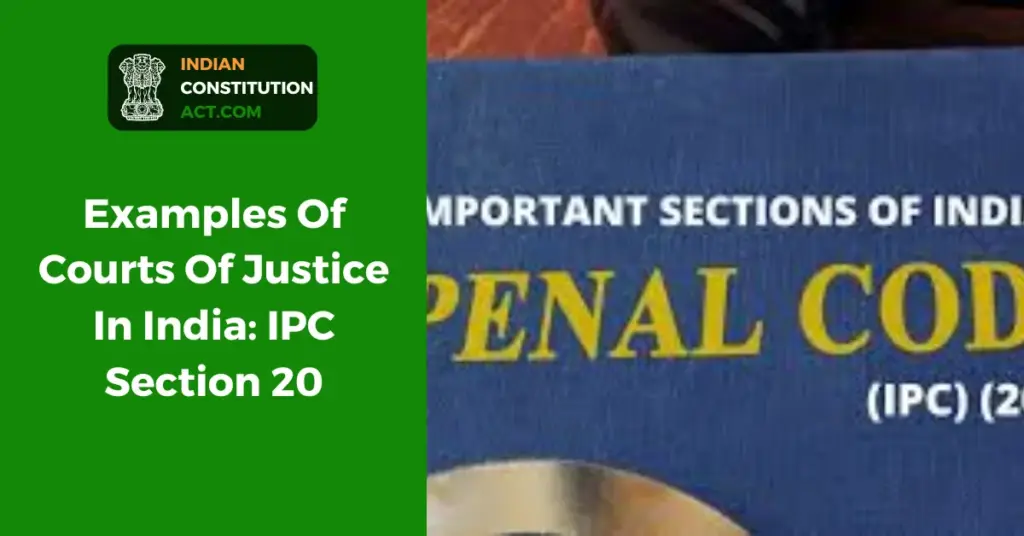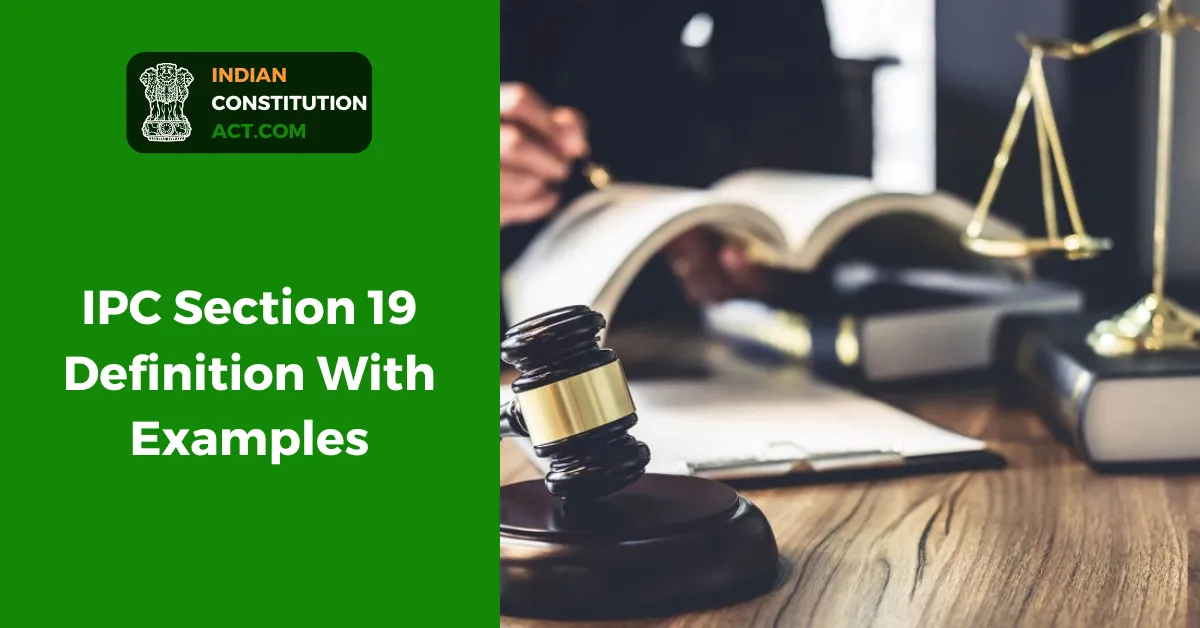IPC Section 20 justifies and defines the word ‘Court Of Justice’. In simple words, the ‘Court Of Justice’ will be acceptable only when there is a judge, who will pass a judicial decision. No matter if there is one judge in a single bench, 2 judges in a division bench, 3 in a full bench, or more than 3 in a constitutional bench. Let’s go through this in detail.
Table of Contents
IPC Section 20 Definition
The words “Court of Justice” denote a judge who is empowered by law to act judicially alone, or a body of judges, which is empowered by law to act judicially as a body, when such judge or body of judges is acting judicially.
Examples Of Courts Of Justice In India: IPC Section 20

The District Courts: Whenever civil cases arrive in a district, they go to the district court.
- Example 1, If a person speaks rudely to you in the market and insults you in front of everyone then your case will be filed in the district court.
- Example 2, If there is a quarrel between husband and wife, in this s scenario, the case will be filed in the district court.
The Consumer Courts: To ensure that no consumer faces any cheating or fraud and to get relief from it, the Consumer Courts have been created by the government.
- For example, If you buy a water bottle from a shop that costs Rs. 20 and the shopkeeper gives it to you for Rs. 25, then you can register a complaint against that shopkeeper in the consumer court.
Also read: What Is IPC Section 16?
The Family Courts: The government has provided us family court where we can resolve family issues.
- For example, Annulment or dissolution of marriage, property matters of the couple, child custody cases, etc. are also registered here.
The Labour Courts: If a worker is mistreated by the owner or some officer of the company, then the worker can file a complaint in the Labor Court.
Supreme Court of India: From Articles 124 to 147, you get to see the features, functions, and other things related to the Supreme Court. The judge is appointed by the president in consultation with the judges of SC and HC. The retirement age of High Court judges is 65 years.
High Courts: From Articles 214 to 331, you get to see the features, functions, and many more essential information related to the Supreme Court. The judge is appointed by the president in consultation with the chief justice of India, the chief justice of state, and the governor. The retirement age of High Court judges is 62 years.
